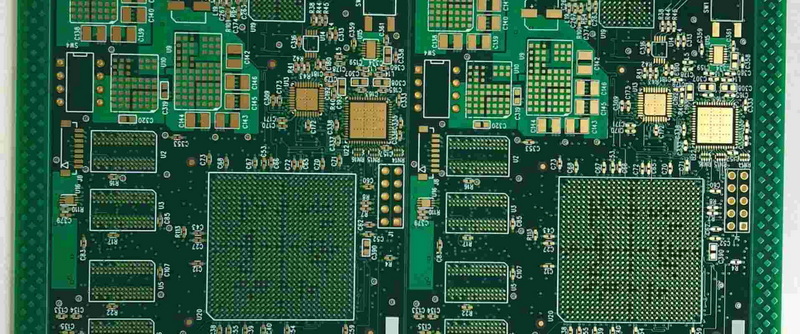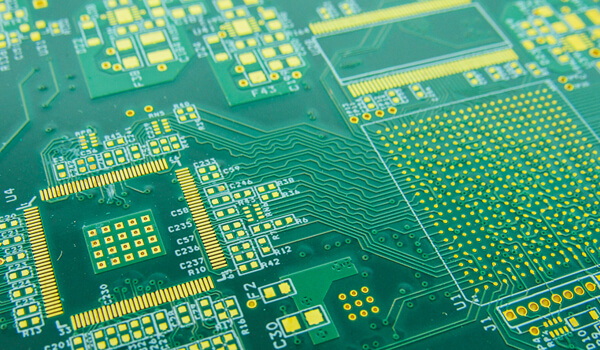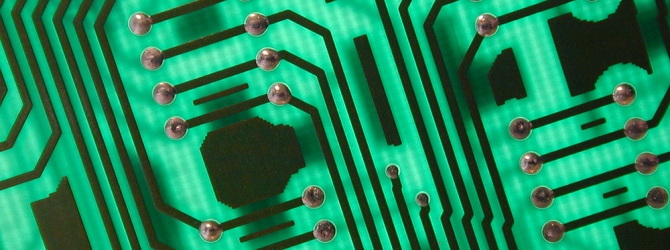Content Menu
● Understanding the Importance of SMT Stencil Cleaning Process
● Common Causes of Misprints Related to Stencil Contamination
● SMT Stencil Cleaning Methods
>> 1. Manual Soak and Wipe Cleaning
>> 2. Pneumatic Spray Cleaning
>> 3. Ultrasonic Cleaning
● Step-by-Step Manual SMT Stencil Cleaning Process
>> Step 1: Visual Inspection
>> Step 2: Preparation
>> Step 3: Loosening Dry Paste
>> Step 4: Cleaning Apertures
>> Step 5: Bottom Side Cleaning
>> Step 6: Top Side Cleaning
>> Step 7: Final Cleaning and Drying
>> Step 8: Final Inspection
● Best Practices to Optimize SMT Stencil Cleaning Process
● Advanced Automated SMT Stencil Cleaning Solutions
● Additional Tips to Prevent Misprints Beyond Cleaning
● Conclusion
● FAQ
>> 1. How often should SMT stencils be cleaned during production?
>> 2. What are the risks of improper stencil cleaning?
>> 3. Can ultrasonic cleaning damage SMT stencils?
>> 4. Is manual cleaning sufficient for high-volume SMT production?
>> 5. What cleaning agents are best for SMT stencil cleaning?
In the surface mount technology (SMT) assembly process, stencil cleaning plays a critical role in ensuring high-quality solder paste printing and avoiding misprints. Misprints can cause defective solder joints, leading to poor electrical connections and reduced product reliability. This comprehensive article explores how an effective SMT stencil cleaning process can prevent misprints, detailing cleaning methods, best practices, and maintenance tips to optimize your PCB assembly line.

Understanding the Importance of SMT Stencil Cleaning Process
SMT stencils are metal sheets, typically made from stainless steel or nickel, with precisely etched apertures that define the solder paste pattern on printed circuit boards (PCBs). These apertures correspond to the pads on the PCB where components will be soldered. During the printing process, solder paste is pressed through these apertures onto the PCB pads. The accuracy and consistency of this paste deposition are paramount to achieving reliable solder joints.
However, residual solder paste, flux, and other contaminants can accumulate on the stencil surface and apertures during printing. If not removed promptly and thoroughly, these residues cause:
- Insufficient solder paste deposition: Residues can reduce the aperture opening size, leading to less paste being deposited than required.
- Clogged apertures leading to incomplete or uneven prints: This causes missing or partial solder deposits, resulting in weak or non-existent solder joints.
- Solder balls and bridging defects: Excess paste or contamination can cause solder to bridge between adjacent pads, creating shorts.
- Increased misprint rates and assembly rework: Defects caused by poor printing increase the need for inspection, repair, or rework, raising costs and production time.
Regular and effective stencil cleaning ensures consistent solder paste transfer, maintaining print quality and reducing defects. It is a foundational step toward minimizing misprints and ensuring high yields in SMT assembly.
Common Causes of Misprints Related to Stencil Contamination
Misprints occur when solder paste is not properly deposited on PCB pads. The primary causes linked to stencil cleanliness include:
- Dried solder paste clogging stencil apertures: As solder paste dries on the stencil, it can harden and block the apertures, preventing proper paste transfer.
- Flux residues causing paste smearing or poor release: Flux residues can cause solder paste to stick to the stencil surface rather than releasing cleanly onto the PCB.
- Dust and debris interfering with stencil contact: Contaminants on the stencil or PCB surface prevent uniform contact, leading to inconsistent paste deposition.
- Damaged stencil mesh or tension loss affecting print accuracy: Over time, stencils can warp or lose tension, exacerbating printing defects.
Proper cleaning removes these contaminants and preserves stencil integrity, preventing misprints and improving yield.
SMT Stencil Cleaning Methods
There are three main types of stencil cleaning processes used in SMT assembly, each with advantages and limitations:
1. Manual Soak and Wipe Cleaning
- Process: Soak the stencil in a cleaning agent or spray solvent, then wipe with cloth or swabs to remove solder paste residues.
- Advantages: Low cost, visual control over cleaning, suitable for small volumes or prototypes.
- Disadvantages: Time-consuming, labor-intensive, inconsistent cleaning quality depending on operator skill, risk of stencil damage if handled improperly.
Manual cleaning is often used in low-volume or prototype environments where automated cleaning equipment is not justified.
2. Pneumatic Spray Cleaning
- Process: Use pneumatic stencil cleaning machines that spray cleaning agent and dry the stencil automatically. These machines typically use a combination of solvent spray, brushes, and vacuum drying.
- Advantages: Automated, efficient, good cleaning effect, reduces labor, consistent results.
- Disadvantages: Limited to certain stencil sizes and thicknesses, initial investment cost, maintenance requirements.
Pneumatic spray cleaning is common in medium to high-volume production environments.
3. Ultrasonic Cleaning
- Process: Submerge stencil in an ultrasonic cleaning machine with cleaning agent; ultrasonic waves create cavitation bubbles that dislodge residues from apertures and surfaces.
- Advantages: Highly effective, automatic, thorough cleaning including apertures, removes even stubborn dried paste.
- Disadvantages: Expensive equipment, requires operator supervision, size limitations, and the need to use compatible cleaning agents to avoid stencil damage.
Ultrasonic cleaning is ideal for high-volume production and situations where the highest cleaning quality is needed.

Step-by-Step Manual SMT Stencil Cleaning Process
For smaller production runs or prototype assembly, manual cleaning remains common. The recommended manual cleaning process includes:
Step 1: Visual Inspection
Check stencil underside and apertures for dried solder paste and debris. Use magnification if necessary to identify clogged apertures.
Step 2: Preparation
Wear lint-free gloves to prevent contamination from fingerprints and place the stencil on an ESD-safe flat surface. Prepare solvents and cleaning tools such as foam swabs, lint-free wipes, soft brass brushes, and adhesive tape strips.
Step 3: Loosening Dry Paste
Use adhesive tape or gentle swabbing with solvent to loosen dried paste. Avoid aggressive scrubbing that can damage the stencil mesh.
Step 4: Cleaning Apertures
Brush apertures gently with a soft brass brush soaked in solvent, then wipe with foam swabs to clear clogs. Ensure all apertures are free of residue to maintain aperture size and shape.
Step 5: Bottom Side Cleaning
Wipe the stencil underside with solvent-saturated wipes in single strokes, replacing wipes frequently to avoid spreading contamination.
Step 6: Top Side Cleaning
Use moistened foam swabs and adhesive tape strips to remove paste residues from the top surface. This prevents paste buildup that can affect stencil alignment and printing.
Step 7: Final Cleaning and Drying
Perform a final wipe with lens cleaning tissue and allow the stencil to air dry or use compressed air for faster drying. Avoid leaving any solvent residue that could interfere with printing.
Step 8: Final Inspection
Visually confirm no residues remain and apertures are clear before reuse. Use a microscope or magnifying glass if needed.
Best Practices to Optimize SMT Stencil Cleaning Process
To maximize the effectiveness of your stencil cleaning process and prevent misprints, consider the following best practices:
- Match cleaning chemicals to solder paste type: Different solder pastes (no-clean, water-soluble, lead-free) require specific solvents for effective residue removal. Using the wrong solvent can leave residues or damage the stencil.
- Control solvent concentration: Regularly monitor and adjust cleaning solution concentration to maintain effectiveness. Overused or diluted solvents reduce cleaning power.
- Use lint-free gloves and materials: Prevent contamination from fingerprints and lint on stencil surfaces. Contaminants can cause defects or clog apertures.
- Apply solvent evenly: Ensure consistent wetting of cleaning wipes or paper to avoid excess solvent mixing with paste and causing smearing.
- Clean apertures before surfaces: Prevent spreading contamination back into apertures during surface cleaning.
- Avoid excessive scrubbing: Protect stencil mesh and tension from damage. Gentle cleaning maintains stencil longevity.
- Maintain cleaning equipment: Regularly service automatic or ultrasonic cleaners for consistent performance and prevent buildup inside machines.
- Set appropriate cleaning frequency: Adjust based on PCB volume, paste type, and environmental conditions to prevent buildup and reduce downtime.
Advanced Automated SMT Stencil Cleaning Solutions
For high-volume production, automated cleaning machines combining ultrasonic and pneumatic spray technologies are recommended. These machines offer:
- Consistent, reproducible cleaning results: Automation removes operator variability and ensures every stencil is cleaned to the same standard.
- Reduced labor and operator variability: Operators can focus on other tasks while cleaning cycles run automatically.
- Faster cleaning and drying cycles: Some machines clean and dry stencils in as little as 6 minutes, increasing line throughput.
- Integrated drying to prevent corrosion or damage: Vacuum or hot air drying prevents water spots and oxidation.
Examples include the SAWA ECO BRID SC-AH100-LV ultrasonic cleaner with vacuum drying, which thoroughly removes solder particles and dries stencils quickly. Other advanced systems offer programmable cleaning cycles tailored to specific stencil sizes and paste types.
Additional Tips to Prevent Misprints Beyond Cleaning
While stencil cleaning is crucial, preventing misprints also requires attention to other factors:
- Stencil Design and Quality: Ensure apertures are correctly sized and etched with smooth walls to facilitate paste release.
- Stencil Tension and Flatness: Maintain proper tension and flatness to ensure uniform contact with the PCB during printing.
- Solder Paste Quality and Storage: Use fresh, properly stored solder paste to maintain consistent viscosity and printing behavior.
- Printer Setup and Maintenance: Regularly calibrate and maintain the solder paste printer to ensure accurate squeegee pressure and speed.
- Environmental Controls: Maintain controlled humidity and temperature to prevent paste drying or contamination.
Combining effective stencil cleaning with these practices creates a robust process that minimizes misprints and enhances overall assembly quality.
Conclusion
Preventing misprints in SMT assembly starts with an effective stencil cleaning process. Whether manual or automated, cleaning stencils regularly and thoroughly removes solder paste residues and contaminants that cause print defects. Matching cleaning agents to paste types, following best practices, and selecting appropriate cleaning methods based on production volume are essential to maintain stencil integrity and print quality. Investing in optimized stencil cleaning reduces misprints, improves yield, and ensures reliable PCB assembly. By integrating stencil cleaning into a comprehensive quality control program, manufacturers can achieve higher first-pass yields, reduce rework costs, and deliver superior electronic products.

FAQ
1. How often should SMT stencils be cleaned during production?
Cleaning frequency depends on PCB volume and paste type. For low volumes (1-5 boards/day), clean after every print. For higher volumes (>10 boards/day), clean every 5-10 prints. Some manufacturers recommend cleaning after every 3-5 prints to maintain optimal quality.
2. What are the risks of improper stencil cleaning?
Improper cleaning leads to clogged apertures, insufficient solder paste deposition, solder balls, bridging, and ultimately misprints and assembly defects. It also increases rework and scrap rates, impacting production efficiency and costs.
3. Can ultrasonic cleaning damage SMT stencils?
Ultrasonic cleaning is generally safe and effective but requires proper handling and compatible cleaning agents to avoid stencil damage. Excessive ultrasonic power or incompatible solvents can degrade stencil mesh or coatings.
4. Is manual cleaning sufficient for high-volume SMT production?
Manual cleaning is labor-intensive and inconsistent for high volumes. Automated pneumatic or ultrasonic cleaning machines are preferred for large-scale production to ensure consistent quality and reduce downtime.
5. What cleaning agents are best for SMT stencil cleaning?
Isopropyl alcohol (IPA), specialized stencil cleaning sprays like HA-4900, and solvents matched to solder paste chemistry are commonly used. Matching chemical to residue type is crucial for effectiveness. Water-based cleaners are preferred for water-soluble pastes, while no-clean pastes may require alcohol-based solvents.




















